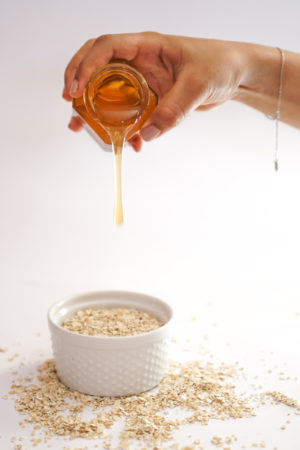Business development • Consumers are demanding food and beverage with less added sugar, and authorities are also pushing for it. But reducing sugar is not as easy as it sounds. Sugar gives volume, texture and sweetness. If you remove sugar, something else must take its place and provide the same taste. But what to choose? Food and beverage companies that want to reduce sugar are facing a challenge. In this article, we look at the alternatives.
The average Swede eats about 37 kilos of added sugar a year. That’s 100 ml of sugar – a day! Way too much says the World Health Organization (WHO), and recommend less than 30 ml of added sugar per day. Preferably even less.
Carrot and stick
Too much sugar increases the risk of overweight and obesity, which are known risk factors when it comes to insulin resistance, diabetes, high blood pressure, high levels of cholesterol, triglycerides and other blood fats, and cardiovascular disease. Added sugar is simply not good for health. Therefore, there is both consumer demand and regulatory pressure on food and beverage producers to reduce added sugar.
Consumers are aware of the danger of sugar and are increasingly demanding foods with less sugar.
Governments and authorities around the world require the same. The United Kingdom, Ireland, France, Hungary, Norway and more than twenty other countries, and many of the US states, have therefore introduced a sugar tax.
So with both carrot and stick, in the form of demand and regulations, one might think that the food and beverage industry should be motivated to reduce added sugar in foods. But it’s not that simple. (Of course.)
The challenge
Sugar tastes good. It also provides volume and texture. So you can’t just remove sugar. It must be replaced by something else. This is the challenge that holds back the food and beverage industry despite both carrot and stick.
At Bayn, we have taken on that challenge. We have researched and developed a solution that we call sweetened fibres. And that’s precisely what it is. Dietary fibres coated with sweeteners. They have fewer calories than regular sugar, or no calories at all, depending on the application.
But before we go into how sweetened fibres can be used to reduce added sugar and empty calories, let’s make a ‘sweetening journey’ and explore what other alternatives are available.
Sweet ingredients

At the first stop of the sweetening journey, we investigate the possibility of replacing added sugar with ‘natural sugars’.
The simplest trick in the school book is, of course, to replace the added regular sugar, glucose syrup, or the like, with ingredients that have a natural content of grape sugar and fruit sugar, for instance, fruit, honey and juices). If all the added sugar is removed in this way, the product is ‘without added sugar’. Problem solved.
Or?
No! It is not the sugar itself that is harmful, but the unnecessary calories that sugar adds. If the sugar replacement does not contain a significantly smaller amount of calories, nothing is gained.
Despite this, there are food and beverage producers who use this trick. Therefore, the EU considered it necessary to explicitly prohibit marketing with terms such as ‘without added sugar’ and the like when non-sugar ingredients are used mainly to give sweetness.
The first stop on the sweetening trip was a disappointment. Let’s continue.
Sugar alcohols
At the next stop, we meet names that are familiar to most: sorbitol, xylitol, maltitol and a handful of others who whose names end with –ol. These are commonly called sugar alcohols. Despite the name, one doesn’t become drunk of them. But they do taste sweet.
Typical for most sugar alcohols is that they contain 40 per cent fewer calories than sugar. On the other hand, most of them are not as sweet either. So to get the same sweetness with only sugar alcohol, more is needed, and then not much is won.
In addition, all sugar alcohols cause flatulence. And at an excessive amount, they have a laxative effect. Therefore, foods containing 10 per cent or more of sugar alcohols must have a warning text. Not too fun to read as a consumer.
Despite these faux pas, sugar alcohols are useful in reducing sugar. However, they can rarely replace sugar straight up and down. It would cause all the above problems. But they can be part of the solution – which we will see later.
We leave the sugar alcohols behind us and continue the sweetening journey.
Artificial sweeteners

Sugar has a relatively low sweetness in relation to its calories. The same goes for sweet ingredients, sugar alcohols and other so-called bulk sweeteners.
Bulk sweeteners are named so because they provide both sweetness and bulk (fill a volume). This is where their problems lie. To get the desired sweetness, a large amount of bulk sweetener is needed, and with large amount follows many calories.
The obvious solution is to find substances that are significantly sweeter than sugar in relation to the amount of calories. One such substance is aspartame.
One hundred grams of sugar contains 400 kcal. Aspartame contains as many calories. But since it is 200 times sweeter than regular sugar, it is enough with only 0.5 grams of aspartame to achieve the same sweetness. This means that aspartame is needed in such small quantities that in practice, the amount of calories is negligible.
Aspartame does not taste like sugar. Neither does Acesulfame K, which is 130–200 times sweeter than regular sugar. But together the taste becomes quite sugary.
Another chemical with a sugar-like taste is sucralose. It’s made from ordinary sugar by replacing three oxygen-hydrogen pairs with chlorine atoms. The result is 500-600 times sweeter than regular sugar.
However, there is a big crux with artificial sweeteners: Consumers dislike them.
To paraphrase Mowgli and Baloo in the Jungle Book: ‘You eat chemicals?! You better believe it. And you’re gonna love the way they tickle.’ Most consumers don’t. Let’s continue our sweetening journey.
Plant-based sweeteners

The path mapped out is right. To get sweetness and lose calories, we must have a high-intensity sweetener. But to get the consumer’s approval, we must leave the chemically produced substances and investigate what is in nature. There are a lot, it turns out.
A high-intensity sweet substance found in nature is osladine. It is 500 times sweeter than regular sugar. If you have spent some time in the forest, you have surely seen the plant that produces the substance. Maybe you’ve tasted it too. The substance is in the rootstalk of the wall fern (common polypody).
But osladine is not allowed in food and beverage. Not because it is dangerous, but because there are no financial interests that have funded the extensive studies that the European Food Safety Authority (EFSA) requires to approve novel food.
There is only one sweetener of natural origin approved in the EU for general use in food and beverage – steviol glycosides found in the plant stevia.
That’s good! Steviol glycosides provide sweetness as naturally as sugar but without calories. We must have reached the goal of the sweetening journey?
Sorry…
Trouble in paradise
The problem with high-intensity sweeteners is precise that they are high-intensity sweet. For example, a mere three grams of steviol glycosides give the same sweetness as one kilogram of regular sugar. But what should the other 997 grams be replaced with?
It is rarely possible to simply remove sugar and add steviol glycosides. Something more needs to be added to compensate for the volume and texture of the sugar. The sugar also has other properties that may need to be compensated. And of course, we have the taste of sugar, which is much more than just sweetness. Everything has to be replaced.
And that would not be enough: Steviol glycosides and other high-intensity sweet substances have their taste that we are not used to. We also need to take that into account.
Therefore, it is far from easy to replace sugar with steviol glycosides (or for that matter some other high-intensity sweet substances). Each application requires extensive and thorough testing of different solutions to not change the sweetness, taste and texture. It requires expertise and equipment that many companies lack, and it takes a long time and costs much money.
Sigh!
Is there no simple solution? Well, there is. Sweetened fibres.

Sweetened fibres
Our sweetening journey ends where we began – with the challenge of the food and beverage industry to replace sugar without changing its volume, texture or taste. This is a challenge that we at Bayn have taken on. And we have found a solution we call sweetened fibres.
We have developed a manufacturing method that makes it possible to create sugar-like particles of dietary fibres, high-intensity sweetener (for example, from stevia) and other raw materials that together provide the desired properties.
This is where the sugar alcohols return. They often play an essential role in getting the right properties of sweetened fibres.
Our manufacturing method, for which we have applied for a patent, allows us to produce powders and granules that not only replace sugar one-to-one with virtually unchanged taste and texture but also can be transported, stored and handled as regular sugar. This is what we call sweetened fibres.
We have developed sweetened fibres for a variety of applications, such as bakery, chocolate, confectionery, dairy, soups and sauces, and market them under the trademark EUREBA®.

Turnkey solution
Eureba is a ‘turnkey solution’ for those who want to reduce the risk and time it takes to develop a sugar-reduced product. You can start from an existing recipe, or create a new one with regular sugar, and then replace the sugar, glucose syrup or whatever you are using, with a Eureba made for the application in question.
Of course, we can also help you customize sweetened fibres for your particular application.
Download e-book
For those who want to relive the sweetening journey and learn more about the different alternatives, we have written a small book that, in six chapters, distributed on 46 pages, takes you on a journey through the sweetening landscape. You get acquainted with various solutions: sugars, sugar alcohol, bulk sweeteners, artificial sweeteners, sweeteners of natural origin and finally sweetened fibres.
You can download it here: https://baynsolutions.com/en/sweetening-journey.
Please, share this article if you liked it.
[et_social_share]








